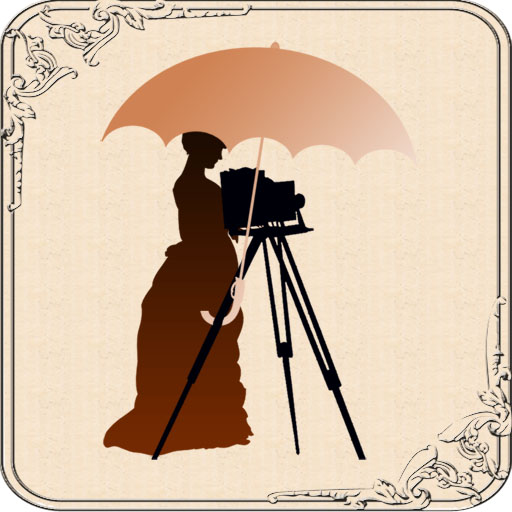100 years ago today (February 21, 1924) we find a write-up of last night’s big ball in Boston that was sponsored by the British Naval and Military Veteran’s Association. One of the secretaries of the group, and one of the organizers of the ball in general, was Mrs. Emily Stokes.
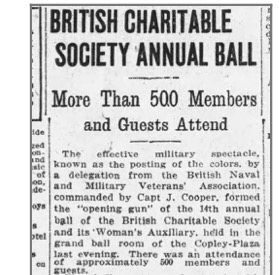

Now I know from other sources that Mrs. Stokes is the widow of a highly decorated UK military veteran, Thomas T. Stokes. But more importantly for Photographs, Pistols & Parasols, I also know that in the late 19th and early 20th centuries, Mrs. Emily Stokes was a very successful photographer in Boston, the owner/operator of a photography studio there.
In my periodic talks about early women photographers, I often have used Emily Stokes (1854-1939) as an example of a married woman who runs a studio on her own for decades but who is not married to a photographer. Of course, I don’t actually know if she was ever a photographer as a single woman: her Boston studio is always operated under her married name, Emily Stokes [her husband was never a photographer as far as I can tell.]

Actually, I don’t know a lot about Emily Stokes’ life before she gets to Boston in the 1880s and opens a studio there. In an 1897 book called Occupations for women: a book of practical suggestions for the material advancement, the mental and physical development, and the moral and spiritual uplift of women, we find this intriguing bit of information about Mrs. Stokes:
Mrs. Emily Stokes, of Boston, is an example of what a woman may accomplish in photography. When compelled by misfortune to give up her London home, she came to America to begin life among strangers. Having been associated with enthusiastic photographers in England, and believing that the position could be filled by women as well as men, she resolved to enter the field as a professional. For sixteen years she has aimed to produce the true child portrait. She has conquered difficulties, and is an enthusiastic and successful artist. “This one thing I know,” she said brightly, and it would be well if many girls could say the same. ” I know every detail of the work; it is the only way to success,” she added, as she glanced about the room at the pictures of sweet child faces. (p.244, Occupations for Woman book, 1897)
Since in 1897 she says she’s been in business for 16 years, I’m assuming she starts the studio circa early 1880s. But other than that, I can’t really explain much about the tidbits revealed in this book. I haven’t yet had any luck tracking down more information about the “misfortune” that forced her to give up her London home, for example, although according to the records we’ve found, she seems to have married Thomas Stokes in England, before she came to the U.S. Also, even this quote would indicate that she specializes in children’s portraits, but the examples I have found to date are mostly of adults.
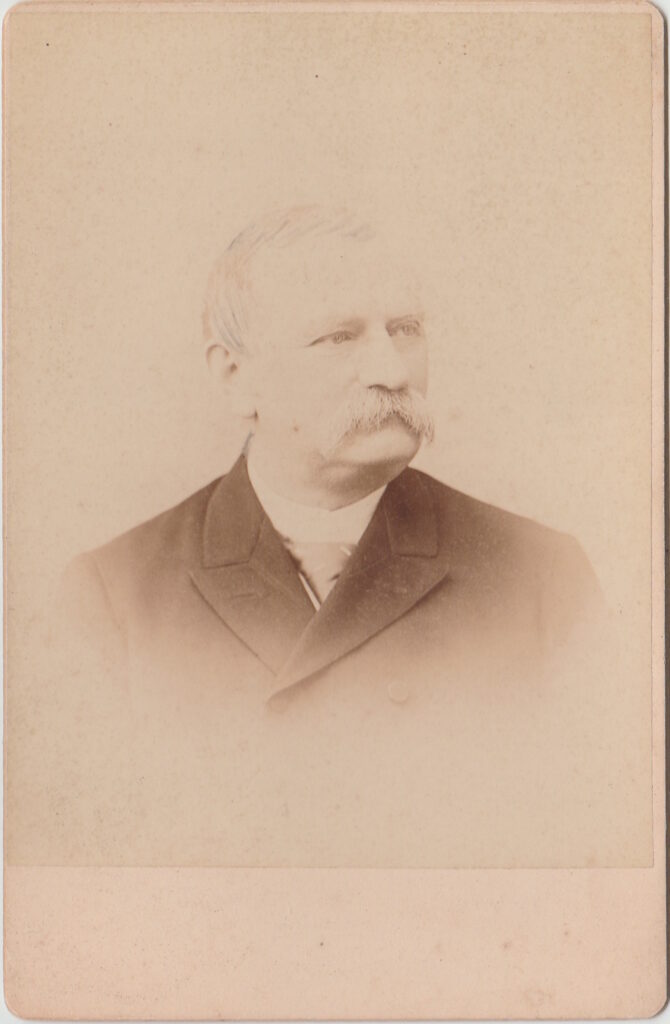
(Culy-McIntyre collection)
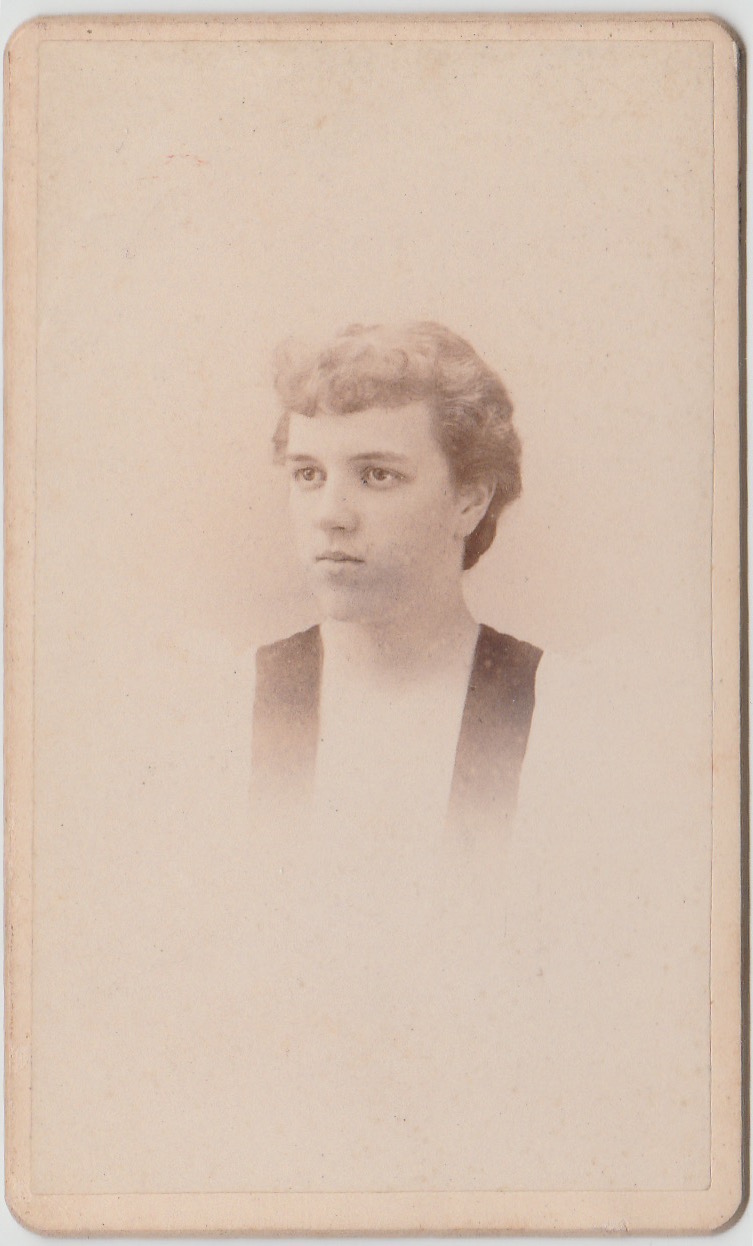
(Culy-McIntyre collection)
Indeed, one of her business plans includes taking photos of female college students. For example, this ad appears the 1897 Wellesley College yearbook :
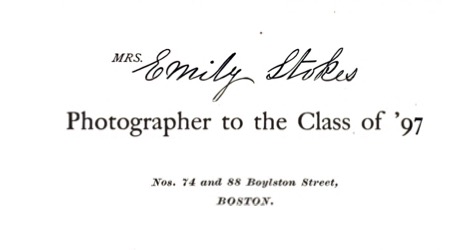
But back to the 1924 ball and the Veterans group. Starting in the 1880s, and even while she was running her studio, Emily Stokes was very active with British Military Veterans charity groups . It’s interesting to see that even after her husband dies in 1922, she’s still very active with some of these organizations, including running this 1924 ball. There are many mentions in the newspaper of Mrs. Stoke’s involvement with these types of events starting in the 1880s.
During the same period, Mrs. Stokes also gets mentioned in the newspapers for her photography. My favorite of these articles is from 1902. It describes how a group of Radcliffe women got together to buy a new dog for one of their fellow students after that student’s dog had died. The Radcliff students then throw a big party where they present the dog to their friend. Then a big group, including the new owner of the dog, the dog , and the group of friends heads down to Mrs. Emily Stokes’ studio, so the dog owner can have a portrait taken with her new dog (dog’s name is initially Sir Thomas, but later called Phiz by his owner).
This event is news worthy, you see, because the Radcliffe student who was the new owner of the dog was a young lady named Helen Keller.
Yes, that Helen Keller.

Photo by Emily Stokes, 1902
Helen Keller and Sir Tom (aka ‘Phiz’)
[Photo courtesy Perkins School for the Blind]
Keller includes this photo in her autobiography, calling Phiz her “favorite” dog. You may have seen this photo before (it’s quite famous) but you may never have noticed that it was taken by an early woman photographer, Mrs. Emily Stokes.
